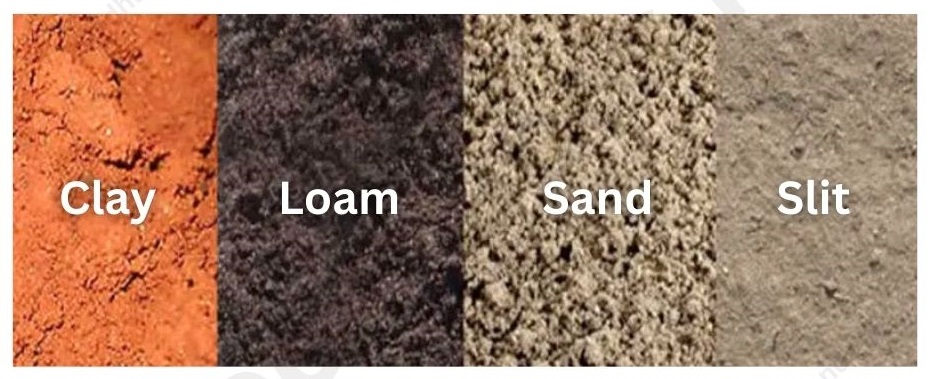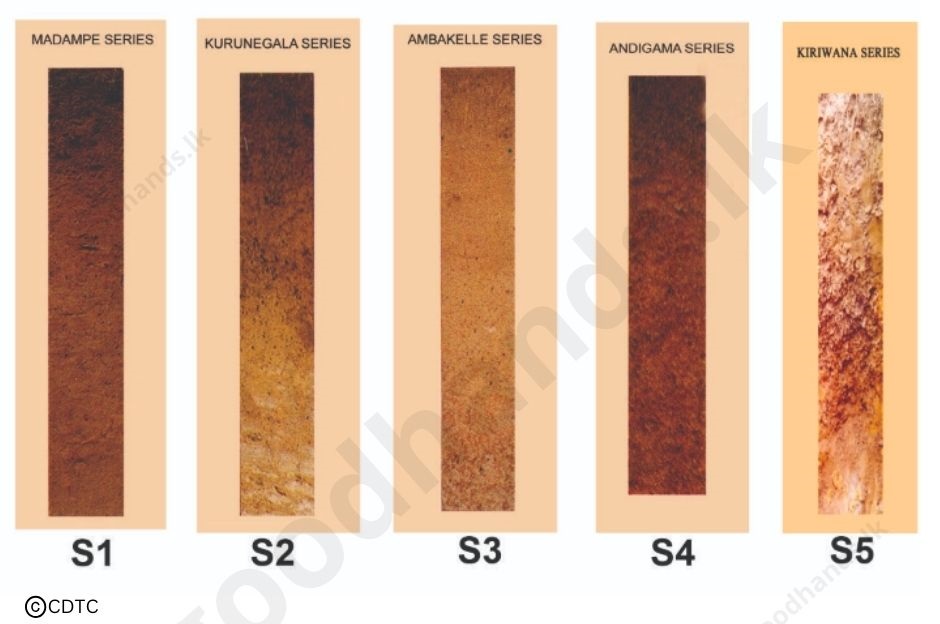Prior to initiating a coconut plantation or planting coconut seedling, careful attention must be given to “the Soil (soil profile)”. As a result, a specific soil suitability classification for coconut has been introduced. It is crucial to possess a thorough understanding of the value assessment of a coconut land, determining its suitability, estimating the potential yield, and identifying the necessary agronomic activities that relevant. This understanding is vital to ensure the successful establishment and productivity of a coconut plantation.

The ideal soil type for coconut cultivation is sandy loam soil.
*The composition should include:
*Clay soil: 30-40%
*Loamy condition: 25-50%
*Sandy condition: 25-50%
*pH value: 5.5-7.5
But coconuts plants can thrive even in gravelly soil under proper agronomic practices. The good soil conditions contribute to an optimal balance of essential nutrients, including nitrogen, phosphorus, potassium, and micronutrients. This balance supports crucial aspects of plant growth, such as moisture retention, root aeration, and the creation of a habitat for beneficial microorganisms, facilitating overall coconut plant development.

Coconut Land Suitability Classification
Coconut lands are classified into suitability classes based on their appropriateness for cultivation. There are five suitable classes (S1, S2, S3, S4 & S5) and two unsuitable classes (N1 & N2).
| Limiting Factors | Potential Yield (ha/year) | Additional Explanations | |
| Suitable Classes | |||
| S1 | No significant limiting factors | 15,000 | Soil in this class exhibits optimal conditions for coconut cultivation and Intercropping under coconut. Nutrient availability, moisture content, soil structure, and soil aeration are all at ideal levels. |
| S2 | Nutrients or moisture (slightly limiting) | 12,500-15,000 | While still suitable for coconut cultivation, this soil class may experience slight limitations in either nutrient availability or moisture content. |
| S3 | Moisture (short term) | 10,000-12,500 | This soil class faces a potential short-term limitation in moisture content. Adequate irrigation method and moisture conservation practices can address this issue. |
| S4 | Moisture & soil aeration | 5,000-10,000 | This soil class presents significant limiting factors such as poor soil aeration, water holding capasity, or soil erosion. However, with careful and proper plantation management practices, this soil can still be suitable for coconut cultivation. |
| S5 | Nutrients, moisture & soil aeration | 2,500-5,000 | This soil class faces multiple limiting factors, including macro & micro nutrient deficiency, inadequate soil moisture, poor soil aeration, and erosion. While challenging, coconut cultivation is still feasible with advanced plantation management techniques. |
| Unsuitable Classes | |||
| N1 | Moisture and nutrients (severely limiting) Aeration and salinity | Not suitable for coconut cultivation | This soil class is deemed unsuitable for coconut cultivation due to severe limitations in soil moisture, soil nutrients, soil aeration, and the presence of steep slopes with high salinity. |
| N2 | Unsuitability in soil condition and adverse environmental factors | Not suitable for coconut cultivation | This soil class is not technically suitable for coconut cultivation. Due to various kind of soil related deficiencies with other environmental factors make it unsuitable for successful coconut plantation. |
The ascending notation is based on increasing severity of environmental factors limiting coconut tree growth and productivity and decreasing returns from cultivation. Thus, the most suitable soil group for coconut cultivation is S1 soil group.

S1 Suitable Class
This is the best type of soil for growing coconuts and cultivation of intercrops with coconut. There are no major issues, so just keeping the area around the coconut trees covered with mulch and planting cover crops is usually enough. Annual yield potential is robust, ranging from 95 to 120 fruits per tree. It’s important to use enough fertilizer (organic or Inorganic) to keep the trees healthy and productive.
S2 Suitable Class
This soil is sandy and needs special care to moisture conservation because it doesn’t hold water very well with the structure of that soil. Cover crops, regular fertilization (organic or inorganic), and the addition of organic matter are recommended. The annual yield potential is slightly lower than S1, ranging from 80 to 95 fruits per tree.
S3 Suitable Class
Found in dry and intermediate climatic zones, S3 soils feature moderately deep, loamy soil with incomplete drainage. The cultivation strategy involves cover crops, mulching, and the application of coconut husks. Systematic fertilization and the addition of organic matter are essential. The annual yield potential ranges from 70 to 80 fruits per tree.
S4 Suitable Class
Gently sloping or moderately sloping lands associated with wet and intermediate zones fall into this soil class. Sandy clay loam texture with gravel or crust layers demands moisture conservation practices. Alongside cover crops and mulching, systematic fertilization and the addition of organic matter are vital. Annual yield potential ranges from 50 to 70 fruits per tree.
S5 Suitable Class
These areas are often situated in close proximity to S4 lands. Within these regions, a layer of gravel or crust is present at a shallow depth, ranging from 1/2 to 2 feet below the surface. Consequently, the coconut tree’s root system is significantly restricted. This category encompasses clay soils with inadequate drainage and sandy soils with poor drainage as well. When engaging in coconut cultivation in such areas, various practices can be implemented, including the cultivation of cover crops, mulching, incorporating organic matter into the soil, utilizing coconut husk pits, and establishing contour drains.
It is also recommended to plant trees within the stream system of lands with suboptimal water flow. The potential yield of a tree in lands falling under this soil suitability classification is approximately 30 fruits per tree.
N1 Unsuitable Class
Profitable coconut plantations are challenging on N1 lands, requiring a fundamental transformation in land structure and topography. The associated high initial cost necessitates careful consideration before attempting coconut cultivation on such lands.
N2 Unsuitable Class
Belonging to the N2 soil category, these lands cannot be developed for coconut cultivation. Their inherent characteristics make them unsuitable for any profitable coconut plantation.
In the context of commercial coconut cultivation, the assessment of land suitability through the examination of land suitability maps becomes essential. Identification of suitable land enables the implementation of profitable coconut cultivation practices. Additionally, if there are any limiting factors present in the identified lands, appropriate remedies can be applied to address and manage these factors effectively.


Leave a Reply